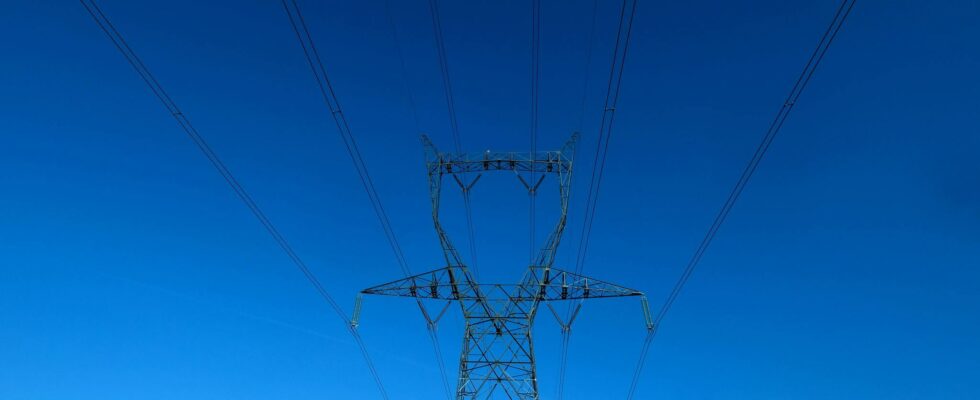Renew, connect, strengthen: RTE unveiled on Wednesday February 12 its development plan for the French electrical network with high voltage, an investment of 100 billion euros by 2040 intended to support the decarbonation of the economy and prepare the country for Climatic challenges of tomorrow.
The network development master plan (SDDR) constitutes the “operational strategy to succeed in the release of fossil fuels” from France by 2050, explains RTE. He describes “how, where and at what rate the network must evolve to allow France to electrify its economy, build new industries and develop its nuclear and renewable production fleet”. This SDDR, whose calendar spreads until 2040, also plans “the reindustrialisation of the country as a priority for the national network”.
“History is the big rocking, the decarbonation By electrification “, sums up Xavier Piechaczyk, the chairman of the executive board of the Electricity Transport Network, with AFP. This network processing plan is also a” regional planning plan “to” serve the territories And allow their growth, but decarbonized growth, “he notes.
Resize the French network
RTE is based on the current assets of the French network, in particular its ability to welcome production from French power plants, among the largest in Europe, and the fact that it is not very congested, unlike countries like Germany . The French network is also already resistant to storms: it is able to support winds of 180 km/h on the coast and 150 km/h in the land, thanks to the security carried out after the storms of 1999.
But its architecture must be resized while the share of electricity will be increased beyond 50% of France’s energy needs by 2050 against a little more than a quarter today. “Consumption (electricity) aims to grow to replace fossil consumption,” explains Xavier Piechaczyk. “Between consumption and production, there is network, so we have to take care of this spine”, whose strengthening “will make it possible to move large flows of electricity.”
RTE wants to kill one stone two strokes by making these projects in once: the renewal of 23,500 km of lines and 85,000 pylons and the adaptation of the network to the hot weather and the future Centennial floods, in accordance with the trajectory defined by The State which anticipates a France warmed at +4 ° C in 2100.
This network, in the shape of a spider web, will have to integrate Future EPR nuclear reactors And absorb the production flows from future wind farms at sea, located in the West, and have them transit towards large industries, more to the east, as well as to the rest of Europe. An economic issue while France exported in 2024 for 5 billion euros in electricity, a record, according to RTE.
Third large electrification plan
To do this, one of the priorities will be to prevent future congestion points already identified. Some of the oldest north-south axes will have to be reinforced, such as those built in the center of the country to evacuate the hydraulic production of the Massif Central and the West of the Pyrenees.
The plan confirms the investments allocated in the service of the attractiveness of the Dunkirk ports – where the work has already started – Le Havre and Fos -sur -Mer, laboratories of industrial decarbonation. From 2029, other areas (Saint-Avold, Sud Alsace, Lyon Vallée de la Chimie, Plan-de-Campagne near Marseille, Loire-Etuary, Sud Ile-de-France and Valenciennes) may benefit from a Specific investment regime if industrial projects materialize.
For this third major electrification plan after that of post-war period and the Messmer plan devoting the birth of the nuclear fleet in the 1970s, RTE chose substantial but cut off. “The investment amounts are both important and competitive at European level,” says the manager, who mirges neighboring countries: more than 250 billion by 2037 for Germany, around 150 billion By 2035 for Great Britain.
To limit expenses, RTE wants to favor the circular economy, including recycling to reduce its consumption of aluminum and steel for cables for example. The manager finally plans to maintain the total length of the air network by minimizing the addition of new lines as much as possible.
